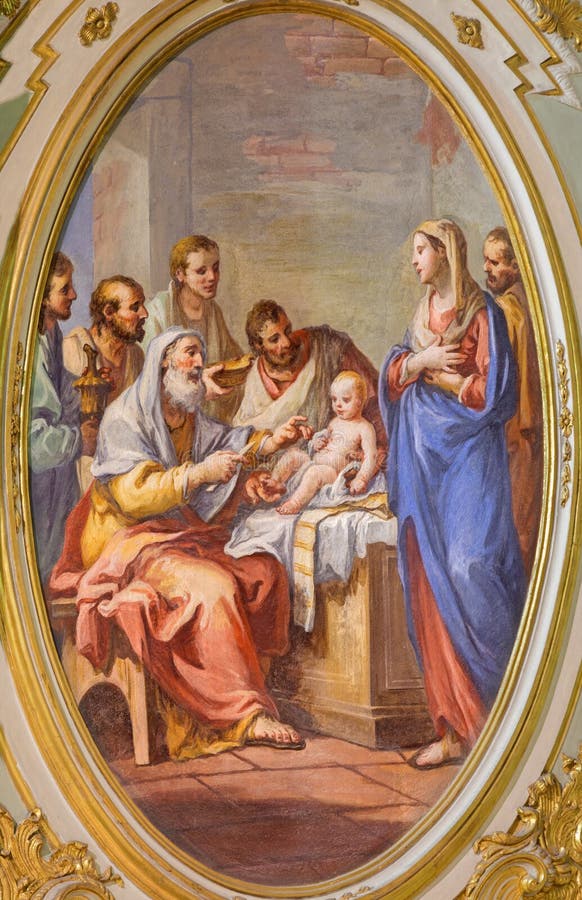
The age of the computer studies of the 3D qualities of the Shroud image had started and the challenge was taken up by others. They also concluded that there seemingly was no forgery involved, because their 3D images showed absolutely no brush stroke marks, which an artist would have produced. It is important to note, that they experimented with lots of photographs of faces and other images, including paintings, and that the result always was a distorted image, with flattening of the relief, including the arms within the chest and the nose pressed into the face. So now they had the scientific proof that the observations of Paul Vignon were correct. The VP-8 image analysis revealed that a photograph of the Shroud image was “spatially encoded”, i.e., it possessed depth information and resulted in anatomically correct 3D images of the face and the body. The primary interest to Shroud of Turin research was the isometric projection display which mapped the brightness variations within the video images. This is an analog video processing device which processes monochromatic images (2D images) and converts the various luminance levels into a hypothetical height corresponding to those luminance levels, thus forming a vertical relief.
#JESUS TURIN SERIES#
After conducting a series of measurements of image density and comparing the cloth-to-body distance with these intensities on different locations of the Shroud image, they created a graphic record with a microdensitometer, of the relationship of the image intensity with the cloth-to-body distance and came to the conclusion that PAUL VIGNON’S observations were correct.Īfter that they contacted in 1976 in Colorado Springs, PETE SCHUMACHER, who had developed the Interpretation System VP-8 Image Analyzer. JACKSON, a physicist, and ERIC JUMPER, of the United States Air Force Academy. The next step in the studies of the 3D characteristics was done by Captains JOHN P. This technique consisted in having every single point on the Enrie photograph of the face examined using his own equipment and a concentrated light source the measurements of the quantity of light which was more or less reflected was transmitted to another part of the instrument, which contained a white-hot point that at the same time engraved the image into a soft material, thus visualizing this hidden information and obtaining a three dimensional Sindonic face. PAUL GASTINEAU, made a negative relief mold using his own system. SULLIVAN and she published her results in 1973 in the National Review in an article titled: “Reading the Shroud of Turin: Climax Approaching”. The result was quite stunning and showed the complete face image with lots of detail.Īnother person that experimented with the 3D qualities of the Shroud image was BARBARA M. Using two positives of the 1931 Shroud photographs of the head, made by Giuseppe Enrie, and then projecting them on a bed of clay, using two projectors to create the matrix for a sculpture. Vala employed a process that he called the Transflex Process of front projection.
#JESUS TURIN PROFESSIONAL#
In the fifties of the last century, LEO VALA, a professional photographer in London, did the first 3-dimensional experiments with the image on the Shroud of Turin. VIGNON could not prove his observations scientifically. This translates to 3D information encoding of the image in the grayscale of the photographs of the Shroud. The density of the image is proportional to the distance between the body and the cloth and that is caused by the fact that more fibers per square unit are discolored. One of his observations was, that the image on the Shroud varied inversely with the cloth-to-body distance, which means that the parts of the body that were close to the cloth, were imaged darker than the parts that were further away. One of these scientists, in the early part of the 20th century was PAUL VIGNON from the University of Paris, and he spent quite some time investigating the Shroud. This aroused the interest of the scientific community and from that moment on the Shroud became the most investigated artifact in the world. The first photographs that were taken by SECONDO PIA in 1898 showed the positive image of a man on the negative glass plates that he used, and also showed that the original image on the Shroud had the properties of a photographic negative. -Presentation: The Holographic Experience.



-Research Nails, Phylacterie, Lance, Leptons.-VP-8 Image Analyzer and Set-up Research 3D.-Holography and the creation of the Master.-Conversion process of 2D to 3D and The Gray Scale.-Digitization of the photographic material.-Photographic material – Giuseppe Enrie.-Holographic Observations in the Shroud Image (Holographic Theory).-3D Studies of the Shroud of Turin (history).-Image Qualities of the Shroud of Turin.


 0 kommentar(er)
0 kommentar(er)
